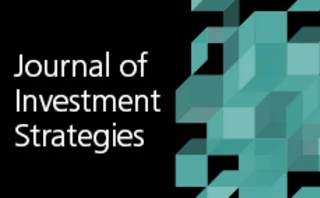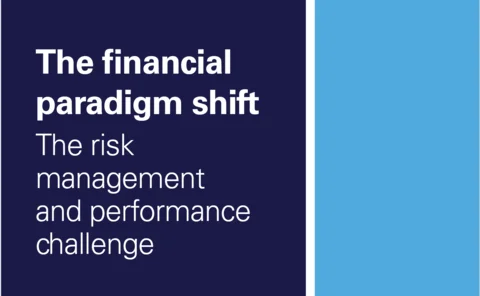Portfolio management
Complying with regulatory initial margin and automating the collateral management process
Since the introduction of uncleared margin rules, collateral management has been thrust into the regulatory spotlight, becoming a priority for firms with over-the-counter derivatives portfolios
AllianceBernstein digs into its own data, looking for alpha
Firm combs through information about its portfolio managers for signs of bias and bad habits
BV–VPIN: Measuring the impact of order flow toxicity and liquidity on international equity markets
The authors analyze the impact of different values of the VBS and sample size applied as inputs in a BV–VPIN model based on the US market in order to ascertain the optimal criteria for application across all other countries in our data set.
Passive funds turn predator in pursuit of pricing edge
State Street, Amundi, HSBC sharpen trading tactics to exploit index changes
Equity hedges protect Munich Re from vol spike
Net derivative liabilities fall 95% year-on-year
International and temporal diversifications: the best of both worlds?
In this paper, the authors focus on seven stock market indexes: two US, three European, one emerging and one Japanese. They select different pairs of markets and, with the help of wavelets, decompose these series at different timescales.
Basel liquidity rules block Fed’s QE exit
LCR and NSFR could produce $1 trillion shortfall in plans for balance-sheet ‘normalisation’
Optimal equity protection of Solvency II regulated portfolios
In the context of equity investments, this paper examines the relationship between the cost of acquiring protection (in the form of put option) and the reduction of capital charges that it entails. The paper develops the idea that Solvency II regulations…
Interconnectedness risk and active portfolio management: the information-theoretic perspective
This paper extensively compares mutual-information-based networks with correlation-based networks on a stand-alone basis and in the framework of active investment strategies.
Agnostic risk parity: taming known and unknown unknowns
This paper offers a new perspective on portfolio allocation, which avoids any explicit optimization and instead takes the point of view of symmetry.
The untapped potential of stress tests
Quants propose technique to include stress testing in portfolio allocation
Stress hedging in portfolio construction
Bilgili, Ferconi and Ulitsky propose a constrained portfolio optimisation approach incorporating stress scenarios
Lessons from the Mortician: volatility modulation
Paul Tudor Jones II, Santhanam Nagarajan and Dario Villani show how to use volatility modulation
Tools and techniques for safeguarding fixed-income portfolios
Sponsored webinar: FactSet
White paper: The financial paradigm shift
White paper: FactSet
Optimal trading with linear and (small) non-linear costs
Bouchaud et al find the optimal trading strategy for a family of predictive signals in the presence of transaction costs
Nonstationarity of the intraday individual and collective seasonalities of price fluctuations
This paper deals with statistical measures based on high frequency data from stock markets, and in particular looks at how these measures changed according to time, with a focus on before and after the crisis of 2008.
Why re-correlation matters in alternative premia investing
Understanding key risk can be difference between success and failure
When time is of the essence, shortcuts are still handy
‘New age’ quants might not like it, but speed can be traded for accuracy in spotting investment opportunities
Stable linear-time optimisation in arbitrage pricing theory models
Gordon Ritter proposes a stable mean-variance optimisation for APT models
Wavelet decomposition and applied portfolio management
In order to separate short-term noise from long-term trends, this paper decomposes financial return series into their time and frequency domains.
When it comes to correlation, cleaning is a chore that pays
Recent trends in research may help firms obtain reliable correlations from limited data
Cleaning correlation matrices
Bun, Bouchaud and Potters present a technique that allow cleaning in-sample noise from correlation matrixes





















